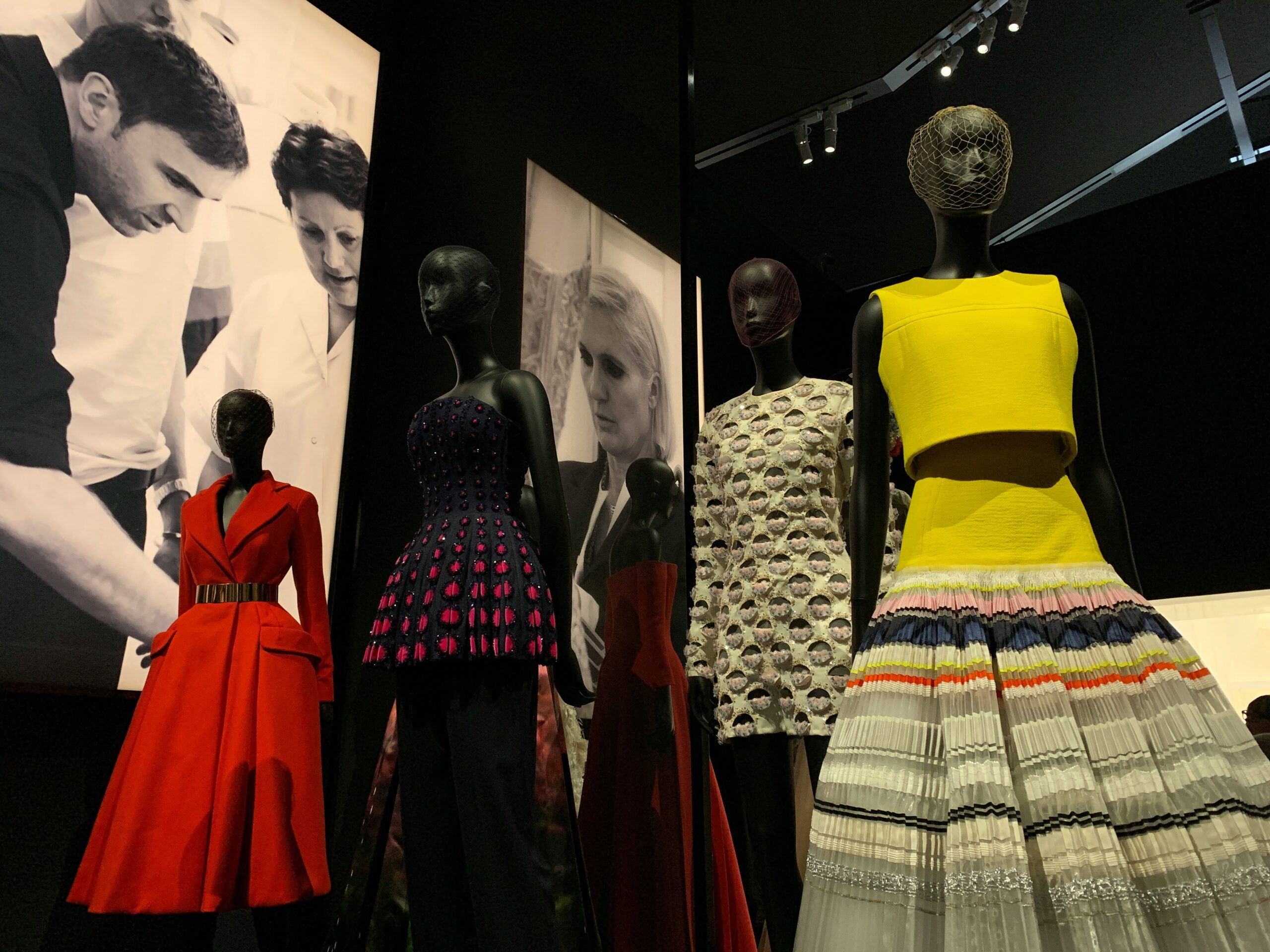

Introduction to Fashion and its Constant Evolution
Fashion is more than just clothing; it’s a reflection of society, culture, and individual expression. Each decade brings a wave of change, introducing trends that capture the essence of the times. From the extravagant styles of the 18th century to today’s minimalist designs, fashion continuously evolves, influenced by various facets like history, culture, technology, and even celebrity status.
Trends come and go like the seasons. One moment we’re embracing bell-bottoms and tie-dye shirts; the next we’re opting for sleek silhouettes and sustainable fabrics. This constant evolution keeps our wardrobes fresh but often leaves us wondering: what shapes these trends?
Join me as we delve into how historical events have set fashion in motion. Explore cultural influences that spark creativity in designers around the world. We’ll also look at technological advancements revolutionizing production and distribution methods while considering how celebrities impact our choices with their iconic looks.
As we navigate through this stylish journey together, we’ll uncover what’s driving today’s movement toward sustainability in fashion—an important shift as consumers become increasingly conscious about where their clothes come from.
Let’s dive into this fascinating world where every stitch tells a story!
Historical Origins of Fashion Trends
Fashion trends have roots that stretch deep into history. Each era has its own signature styles influenced by societal changes and cultural shifts.
In ancient times, clothing often reflected status and occupation. The Egyptians favored linen while the Romans embraced togas as a symbol of citizenship. These garments went beyond fashion; they conveyed power and identity.
Fast forward to the Middle Ages, when practicality ruled over aesthetics. Fabrics were heavy, and colors indicated social rank. The Renaissance brought a burst of creativity with intricate designs and vibrant hues, showcasing individual expression.
With the Industrial Revolution came mass production. Fashion became accessible to the masses for the first time, transforming how people dressed daily.
As we moved into modernity, each decade introduced distinctive looks—from flapper dresses in the 1920s to bell-bottom jeans in the 1970s—each trend telling a story about society’s evolution at that moment in time.
Cultural Influences on Fashion Trends
Fashion reflects the rich tapestry of cultural influences that shape our world. From vibrant textiles to intricate patterns, each era showcases distinct styles inspired by various cultures.
Take the colorful prints of African attire or the elegant silhouettes found in traditional Japanese kimonos. These elements often find their way into mainstream fashion, blending heritage with modern aesthetics. Designers frequently draw on global inspirations, creating unique fusions that celebrate diversity.
Moreover, music and art movements have played pivotal roles in shaping trends. The punk movement brought leather jackets and bold colors into everyday wear, while hip-hop culture popularized oversized clothing and statement accessories.
Cultural festivals also inspire seasonal collections as designers pay homage to traditions through fabric choices and designs. This interplay enriches our wardrobes while promoting inclusivity within fashion communities worldwide. Each garment tells a story rooted in its origins, fostering appreciation for varied cultural expressions through style.
Technological Advancements and their Impact on Fashion
Technology has revolutionized the fashion industry in myriad ways. From design to manufacturing, every aspect has been touched by innovation. Designers now use 3D printing to create intricate pieces that were once impossible to make.
Digital fabric printing has also emerged as a game-changer. It allows for unique patterns and vibrant colors without the extensive waste associated with traditional methods. Sustainability takes on a new meaning here.
Moreover, augmented reality is enhancing the shopping experience. Virtual fitting rooms let customers try clothes before they buy them, bridging the gap between online shopping and physical stores.
Social media platforms have made trends more accessible than ever. Influencers showcase styles instantly, leading to rapid shifts in what’s considered fashionable.
With each technological leap, fashion adapts and evolves, reflecting not just our aesthetic desires but also our lifestyles and values in an increasingly digital world.
Celebrity Influence on Popular Fashion Trends
Celebrities have always held a powerful sway over fashion trends. Their choices can turn obscure styles into must-haves overnight. When a star steps out in a unique outfit, it often sparks an immediate demand.
Social media amplifies this influence significantly. A single Instagram post from a celebrity can lead to millions of followers scrambling to replicate their look. Influencers and pop icons now serve as style arbiters for many.
Red carpet events are crucial moments where bold fashion statements emerge. Designers vie for the opportunity to dress these stars, knowing visibility translates into sales.
However, it’s not just about glitz and glamour anymore. Many celebrities advocate for sustainable brands or promote ethical choices, shaping consumer behavior in unexpected ways. This shift highlights how influential figures can drive change beyond mere aesthetics, encouraging fans to consider the impact of their wardrobe decisions too.
Sustainable and Ethical Fashion Trends
Sustainable and ethical fashion is more than just a trend; it’s a movement. Consumers are becoming increasingly aware of the environmental and social impacts of their choices.
Brands now prioritize eco-friendly materials like organic cotton, hemp, and recycled fabrics. This shift reduces waste while promoting responsible manufacturing processes.
Transparency has also become vital. Shoppers want to know where their clothes come from and how they were made. Companies sharing this information forge stronger connections with conscious consumers.
Secondhand shopping is rising in popularity too. Thrift stores, online resale platforms, and clothing swaps breathe new life into pre-loved garments while minimizing waste.
Additionally, many designers are embracing slow fashion principles. They focus on quality over quantity, encouraging timeless pieces that last longer than one season.
As awareness grows, sustainable practices will likely shape the future landscape of fashion even further.
The Future of Fashion: Predictions and Speculations
As we look ahead, the future of fashion is poised for radical transformation. Virtual reality and augmented reality are set to revolutionize how we shop. Imagine trying on clothes without stepping into a store.
Sustainability will continue to be at the forefront. Brands that prioritize eco-friendly materials and ethical production practices will likely dominate the market. Consumers are more aware than ever about where their clothing comes from.
Tech innovations like AI-driven design could change trends almost overnight. Algorithms might predict what styles resonate with buyers before they even hit the runway.
Inclusivity will also reshape this landscape. Expect more brands embracing diverse body types, cultures, and genders in their collections—making fashion accessible for everyone.
These shifts indicate an exciting era ahead—a blend of technology, ethics, and creativity shaping our wardrobes in unexpected ways.
Conclusion
Fashion is a vibrant and ever-changing landscape. From the opulent styles of history to contemporary sustainable practices, the journey has been fascinating. Each trend tells a story, shaped by cultural shifts, technological innovations, and influential figures.
As we look to the future, it’s clear that fashion will continue to adapt. New materials and conscious choices are emerging as essential elements in design. The evolution of fashion reflects not just our changing tastes but our collective values.
The wardrobe we curate today may be vastly different from what we’ll wear tomorrow. Yet one thing remains certain: fashion will keep evolving, mirroring society’s pulse with every thread and seam woven into its fabric.
